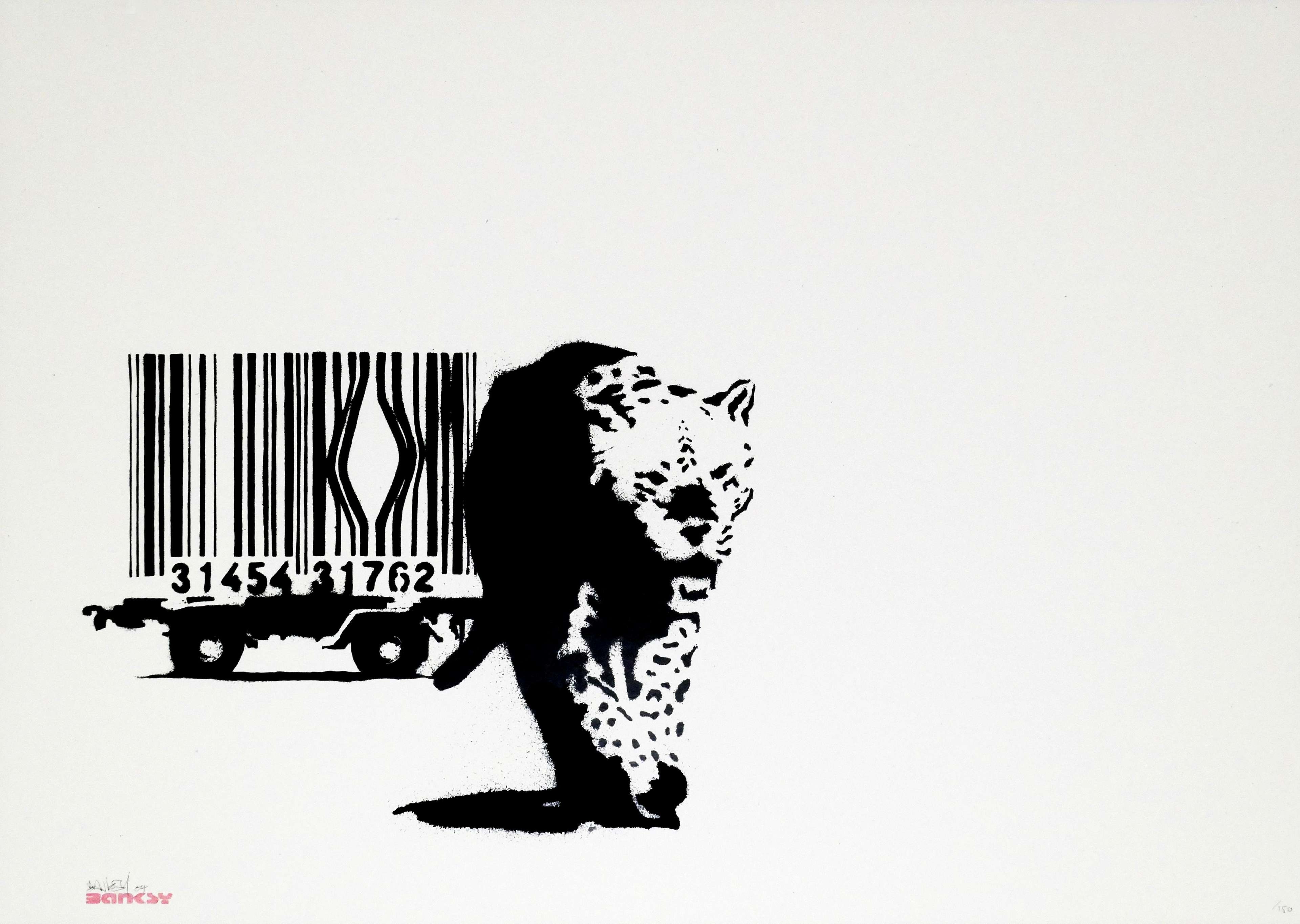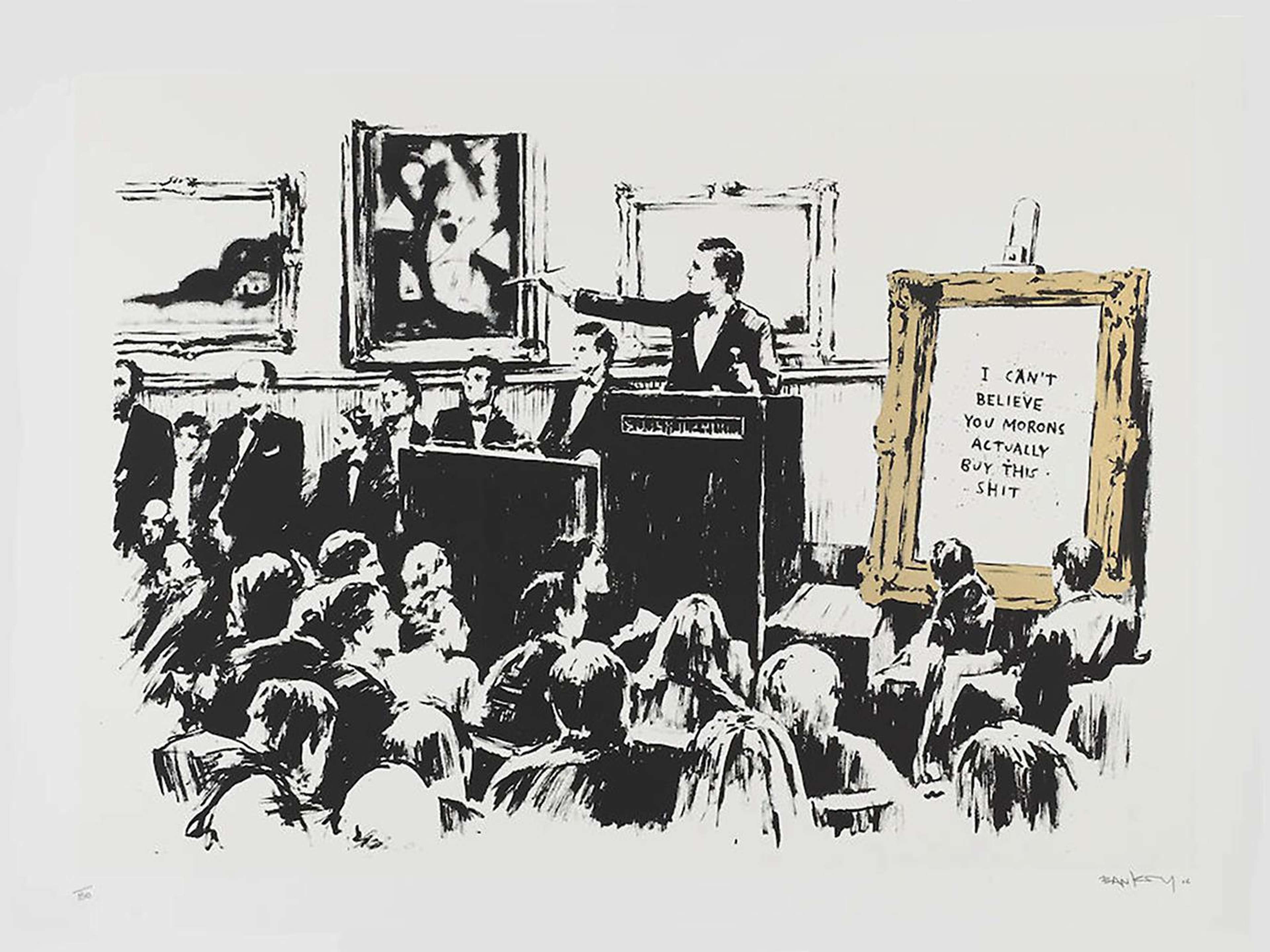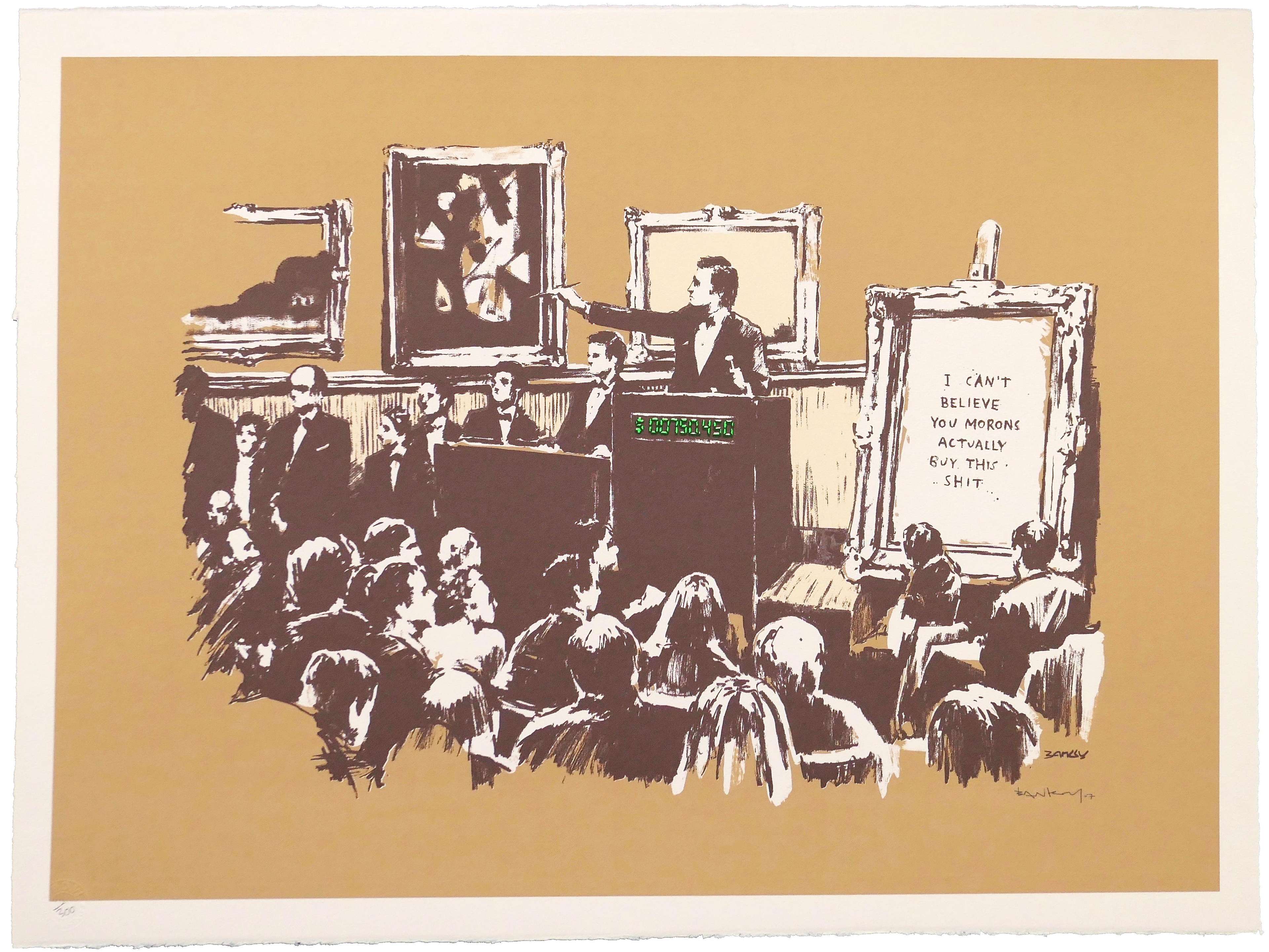 Image / The Art Newspaper © / Spider Louise Bourgeois 1996
Image / The Art Newspaper © / Spider Louise Bourgeois 1996
Interested in buying or selling
Louise Bourgeois?

Louise Bourgeois
104 works
Visually arresting, intellectual pieces are the hallmark of Louis Bourgeois practice. Her technique expands across mediums offering an array of contemporary works that many collectors would like to invest in. Here’s our guide on how to buy Louise Bourgeois prints.
 Image © Tate Modern / Louise Bourgeois © Robert Mapplethorpe 1982
Image © Tate Modern / Louise Bourgeois © Robert Mapplethorpe 1982Who Is Louise Bourgeois?
Louise Bourgeois (1911-2010) was a French-American artist who made a significant contribution to the development of contemporary art.
Bourgeois's work is known for its exploration of the human body and emotions, often expressed through abstract forms and unconventional materials. She used a variety of media, including sculpture, installation, drawing, and printmaking. Her art often reflects her personal experiences, such as the complex relationships within her family and her own battles with anxiety and depression. One of her most famous works is the series of large-scale spider sculptures, which she began in the 1990s. These works are interpreted as symbolic representations of Bourgeois's mother, who was a weaver and a skilled craftsperson.
Throughout her long and prolific career, she produced a body of work that has been widely recognized for its innovative use of materials, its psychological intensity, and its exploration of themes such as gender, sexuality, and the body.
Bourgeois received numerous awards and accolades throughout her career, including the National Medal of Arts in 1997 and the Legion of Honor in 2008. She continued to work until her death in 2010 at the age of 98.
 Image © Tate Modern / Cell And Eyes © Louise Bourgeois 1993
Image © Tate Modern / Cell And Eyes © Louise Bourgeois 1993Louise Bourgeois’ Influence on Contemporary Art
Bourgeois had a significant impact on the art world, particularly in the realm of sculpture. Her work was influential in the development of postmodernism and feminist art, and her use of unconventional materials and techniques helped to expand the boundaries of what sculpture could be. Bourgeois' emphasis on the psyche and her use of personal experience as source material can be seen in the work of contemporary artists like Tracey Emin.
Notable examples of Bourgeois's work include Maman, a monumental spider sculpture that has been exhibited in cities around the world, including Paris, London, and Tokyo. Another significant work is Cell (Eyes and Mirrors), a room-sized installation featuring mirrors, sculptures, and other objects that explore themes of confinement and surveillance.
Bourgeois's work has been exhibited at major museums and galleries worldwide, including the Tate Modern in London, the Guggenheim Museum in New York City, and the Centre Pompidou in Paris. A timeline of her major exhibitions and accomplishments includes her retrospective at the Museum of Modern Art in 1982, her representation of the United States in the Venice Biennale in 1993, and her receipt of the National Medal of Arts in 1997.
 Image © The Brooklyn Museum / The Dinner Party © Louise Bourgeois 1979
Image © The Brooklyn Museum / The Dinner Party © Louise Bourgeois 1979Psychoanalytic Theory
The Destruction Of The Father is both a novel and a series of sculptures that explores the theme of the Oedipal complex. The dramatic installation was highly suggestive, but visually mandatory when it came to providing an accurate representation of Louise’s psychological struggles and relationship with her father.
Feminist Art
One notable example of Bourgeois' influence on contemporary art is her contribution to the feminist art movement. Bourgeois' emphasis on the female body, its vulnerabilities, and its strengths, resonates with feminist artists who continue to explore these themes. For example, Judy Chicago's iconic installation The Dinner Party uses a similar language of female anatomy and symbolism to celebrate women's achievements throughout history.
Installation Innovation
Cell (Eyes and Mirrors) is a notable installation by Louise Bourgeois created in 1989. The installation is an immersive experience that consists of a small, enclosed room filled with mirrors and glass eyes suspended from the ceiling. The use of mirrors and reflective surfaces in the installation has become a common motif in contemporary art, and the installation's impact on contemporary art speaks to Bourgeois' influence as an artist and innovator.
 Image © The Museum of Modern Art / Arch of Hysteria © Louise Bourgeois 1993
Image © The Museum of Modern Art / Arch of Hysteria © Louise Bourgeois 1993Why Invest in Bourgeois?
Growing Market Value
Louise Bourgeois' market value has seen significant growth in recent years, as demand for her work has increased. Her unique approach to sculpture and exploration of themes such as sexuality, trauma, and the human psyche have continued to resonate with collectors, resulting in a high sticker price at auction.
Notable sales of Bourgeois' artwork include her Spider series, which features large-scale spider sculptures made from bronze, steel, and marble. In 2019, a steel version of Spider sold for $32 million at Christie's in New York, setting a new record for the artist. A different version of Spider is expected to reach $40 million this year at auction, breaking records at even a low estimate of sale.
Bourgeois' rise in interest as of late can be attributed in part to her increasing recognition in the art world, as well as to her influence on contemporary art. Her work has been the subject of major retrospectives at museums such as the Tate Modern in London and the Guggenheim in New York, bringing her work to a wider audience.
The Value in Scarcity
Another factor driving Bourgeois' market value is the rarity of her work. While she produced a significant body of work throughout her career, many of her most iconic pieces are in the collections of major museums or owned by private collectors. While the public has access to view her works in these institutions, her art commands high prices at auction due to their scarcity. Bourgeois' market value is likely to continue to increase over time, as her work becomes rarer and more sought after by collectors.
Personal Delight
Collectors who are interested in owning a piece of art history and potentially benefiting from its appreciation in value over time may find investing in Bourgeois' work to be a smart decision. However, for those who simply appreciate her unique approach to sculpture and her exploration of complex themes such as femininity and personal experience, owning a reproduction of her work can be just as rewarding.
Tips for Building a Louise Bourgeois Print Collection
Managing Your Art Portfolio
Building a Louise Bourgeois print collection can be a rewarding endeavour for art collectors and enthusiasts. Consider these tips when building a collection of her prints:
Research
From lithographs to etchings, Bourgeois' printmaking techniques varied and produced unique results. Knowing the different types of prints she created can help you determine which pieces to look for when building your collection.
Set a budget
While some of Bourgeois' prints can be relatively affordable, others can be quite expensive. Set a budget for your collection and keep in mind that some pieces may be more expensive than others.
Buy from Reputable Sources
Look for galleries, specialty brokerage firms, or auction houses that specialise in prints and have a track record of selling authentic works.
Consider the Edition
Many of Bourgeois' prints were created in limited editions, which can affect their value. Be sure to consider the edition number when purchasing a print and keep in mind that lower edition numbers can be more valuable.
Focus on Your Personal Taste
Your art collection should be about your personal taste and enjoyment of the artwork. Select pieces that speak to you and that you'll enjoy looking at and living with in your collection.
 Trading Floor © MyArtBroker 2023
Trading Floor © MyArtBroker 2023How to Determine the Value of Louise Bourgeois Prints & Editions
Determining the value of Louise Bourgeois prints and editions can be a complex process, influenced by a number of factors. One of the reasons prints are so valuable in the market is because they’re rare, limited editions which generally hold more value than works produced in larger quantites. Prints that are in excellent condition, with no signs of wear or damage, will be more valuable than prints that were less taken care of. You can rely on recent sales data, auction performance, or tools like our Trading Floor to keep an eye on current and projected market values.
 Image © The Museum of Modern Art / Femme Maison © Louise Bourgeois 1993
Image © The Museum of Modern Art / Femme Maison © Louise Bourgeois 1993Louise Bourgeois’ Most Popular Prints
Femme Maison
Refers to a woman whose body is intertwined with her physical home, suggesting a difficult relationship between women and their domestic lives. This motif reflects Bourgeois' own conflicted feelings about her gender and role as a wife and mother, as well as her observations on the societal expectations placed on women.
Girl With Hair
Listed on Artsy at $95,000, this print points to an issue of privacy, and the emotional depths of vulnerability. It’s been featured a variety of times across multiple institutions over the years, highlighting a relationship between self and the body.
Spiral Woman
Interpreted originally from her bronze sculpture, this piece has enthusiasts wonder if it’s about control, freedom, or another ongoing theme in feminist art.
 The Museum of Modern Art / Girl With Hair © Louise Bourgeois 2007
The Museum of Modern Art / Girl With Hair © Louise Bourgeois 2007How to Authenticate Louise Bourgeois Prints & Editions
Before attempting to authenticate a Bourgeois print, it is important to conduct thorough research on the artist's work and the specific print or edition in question. Look for documentation, such as exhibition catalogues or auction records, that can help confirm the authenticity of the print. Carefully examine the print for any signs of forgery or reproduction. Look for inconsistencies in the printing process, such as variations in ink density or registration, that could indicate that the print was not produced using the original printing plates. Most artists sign their prints by hand, which can be an important clue in authenticating the print. Consider contacting an appraiser, conservator, or auction house that specialises in Bourgeois' work for assistance. They can assist you in tracking back ownership and verifying the provenance of your collection.
 Image © The Museum of Modern Art / Spiral Woman © Louise Bourgeois 2002
Image © The Museum of Modern Art / Spiral Woman © Louise Bourgeois 2002How Do You Check the Condition of a Louise Bourgeois Print?
Inspect the Material
The first step in checking the condition of a Bourgeois print is to inspect the paper for any signs of damage or wear. Look for creases, tears, folds, and discoloration, which can indicate that the print has not been properly cared for.
Examine Fading
Prints that have been exposed to sunlight or other sources of UV radiation may show signs of fading. Check for any areas of the print that appear lighter or less saturated than the rest of the image.
Assess the framing
If the print is framed, inspect the framing materials for any signs of damage, such as scratches or chips. Make sure that the print is properly mounted and that the framing materials are not causing any damage to the print.
Where Can I Buy a Louise Bourgeois Print in 2023?
Online marketplaces, speciality brokerages, galleries and auction houses all remain top options for purchasing Bourgeois prints. Working with a reputable dealer or broker can help ensure that you are getting a genuine artwork that has been properly vetted. Conduct your own research and compare prices across different sellers to ensure that you are getting a fair price for the artwork.
 MyPortfolio © MyArtBroker 2023
MyPortfolio © MyArtBroker 2023Why Use MyArtBroker to Find Your First Louise Bourgeois?
A Dedicated Broker
MyArtBroker delivers a unique service that connects you with your own personal broker who will guide you through a secure transaction. Your broker will assist you with authenticity and provide advice on realistic sale prices, determine the optimal time to sell, and negotiate the best deals on your behalf from start to finish.
Our Network
Our Trading Floor is a highly valuable and sought-after platform that has revolutionised the way art investors and enthusiasts buy and sell artwork. Providing real time market data, its value lies in its convenience, accessibility, and the level of transparency and security it provides to over tens of thousands of users.
Collecting Louise Bourgeois Prints with MyArtBroker
MyArtBroker is a trusted platform that works directly with collectors to source authentic and verified artworks, offering a reliable and trustworthy way to purchase art with confidence. With a team of experienced art experts, we provide guidance and support throughout the purchasing process, from selecting the right artwork to negotiating the sale and arranging for delivery.
We’ve leveraged our market intelligence to provide collectors with resources like MyPortfolio, the only print market index that puts data-driven technology in the hands of investors. It’s easier than ever to track the value of your art investments and make informed decisions through our Trading Floor.





